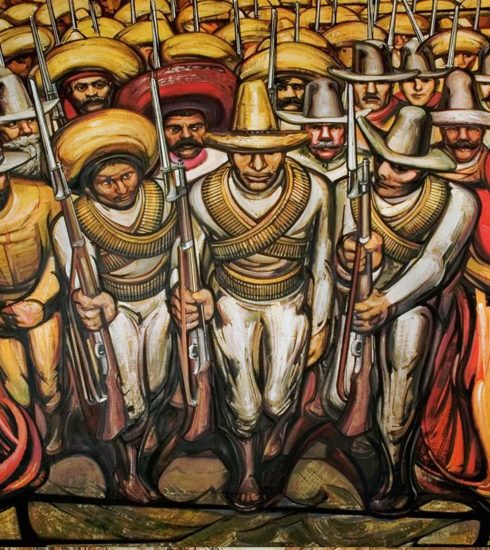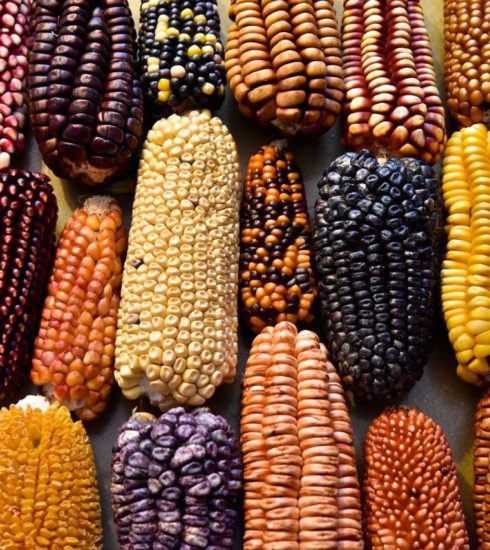Wool art in Mexico: Between tradition and adaptation
Mexican textile art, crafted from wool, reflects the rich cultural heritage of Mexico, blending pre-Hispanic traditions with the influence of Spanish colonization. This diverse and deeply rooted artistic expression varies by region and the communities that produce it. Learn more about this fascinating art form and its evolution over time.
A brief history of textile art in Mexico
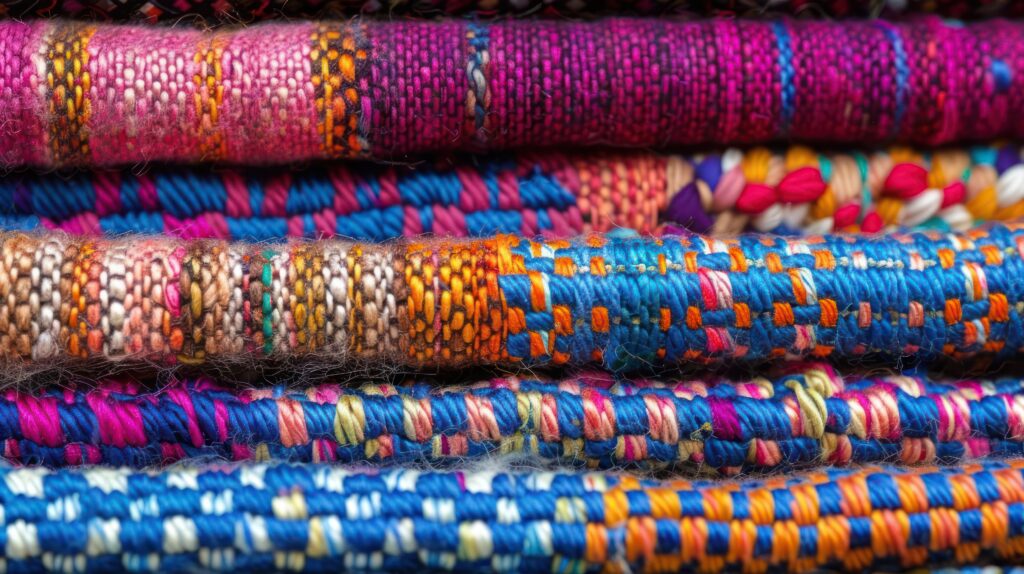
Photo from Freepik
Thanks to the remarkable accounts from the Spanish conquest, we know about fierce civilizations who subjugated various enemies, receiving quetzal feathers, gold, jade, cacao, and cochineal as tribute. However, perhaps due to its ordinary nature, the significance of certain items, once exclusively crafted by noblewomen—textiles—has been overlooked.
According to a National Institute of Archaeology and History publication, each dominion was required to deliver vast textiles, such as bedspreads, dyed blankets, huipiles, and more, mainly made of cotton. After all, textiles played a crucial role in significant community events. For instance, blankets were symbolic representations of marriage unions and political alliances.
With the arrival of the Spanish, sheep were introduced to the New World, adding wool to the textiles in Mexican territory, and significant workshops were established for commercial production. This led to the diversification and commercialization of Mexican textiles, even in Europe.
Today, wool textiles are a vital element of the ethnic identity of many communities. From small souvenirs to intricate garments, this art form has evolved according to market trends and the introduction of new materials.
Wool art today
From bags, backpacks, and wool accessories inspired by traditional patterns from Chiapas and Oaxaca to knitted wool dolls from Michoacán, each artistic expression has solid cultural roots and reflects the identity of the indigenous communities that create them.
Wool art in Mexico celebrates history, tradition, and creativity that remains relevant today. Join us on this journey through Mexico to discover some wool art expressions.
Nierika boards and God’s Eye from the Gran Nayar
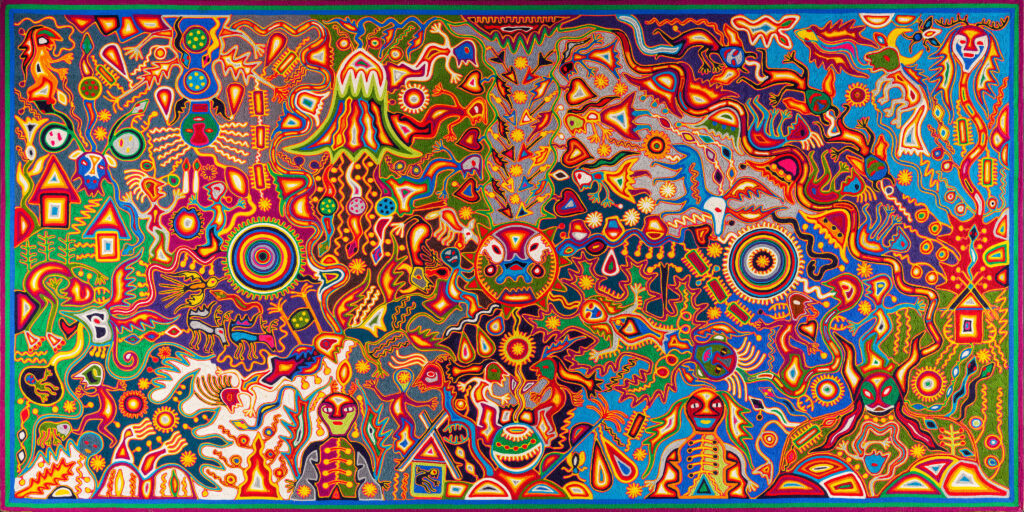
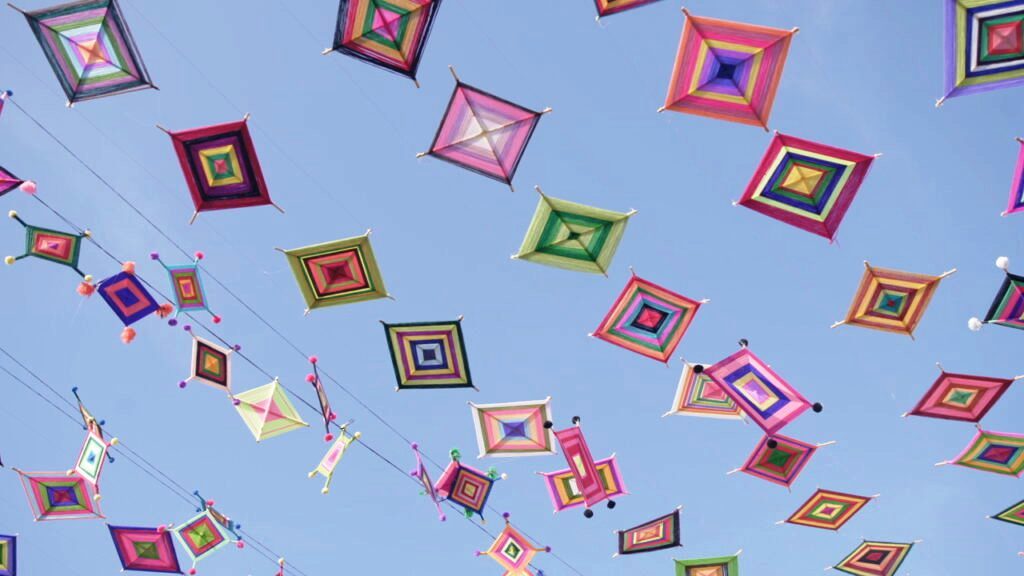
These pieces are part of Huichol or Wixárika art, an indigenous people living in the Gran Nayar region, which spans parts of Jalisco, Nayarit, Durango, and Zacatecas.
Nierika boards are mesmerizing mosaics made of yarn or beads glued with wax onto flat wooden surfaces. They can be inspired by dreams, visions, myths, and deities featuring elements of nature, such as deer, peyote, or eagles.
On the other hand, the God’s Eye, although small in size, is a ritual object believed to provide protection. Perhaps due to its vibrant colors or symbolism, this piece has become so popular that it can be easily found in different versions, such as keychains or decorative items, in the tourist areas of Riviera Nayarit and Puerto Vallarta.
Teotitlán rugs
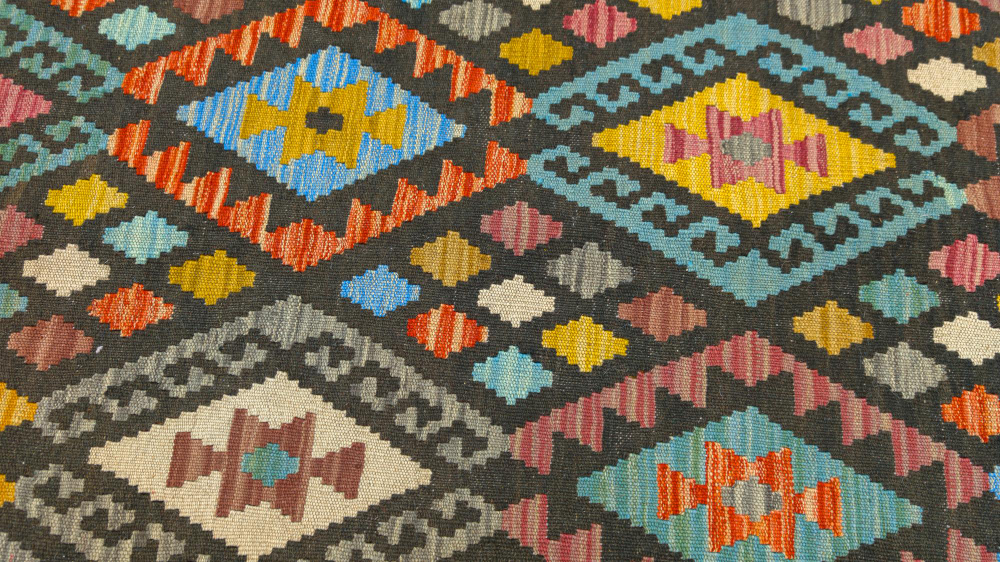
Photo from Freepik
The origins of Teotitlán del Valle rugs in Oaxaca traced back to the cotton textile production of the Zapotec culture in 500 AD. With the arrival of the Spanish, wool, and pedal looms were introduced for weaving. Today, some rugs from this region are still dyed with natural dyes like cochineal, indigo, and other plants.
Oaxacan rugs often depict landscapes, mythological figures, and primarily Zapotec geometric patterns, such as the ‘greca,’ representing the cycle of life and adorning the archaeological sites of Mitla and Monte Albán. However, these rugs have also adapted to more contemporary styles to meet export market demands, with designs inspired by paintings by M.C. Escher or Francisco Toledo.
Rebozos from Tenancingo
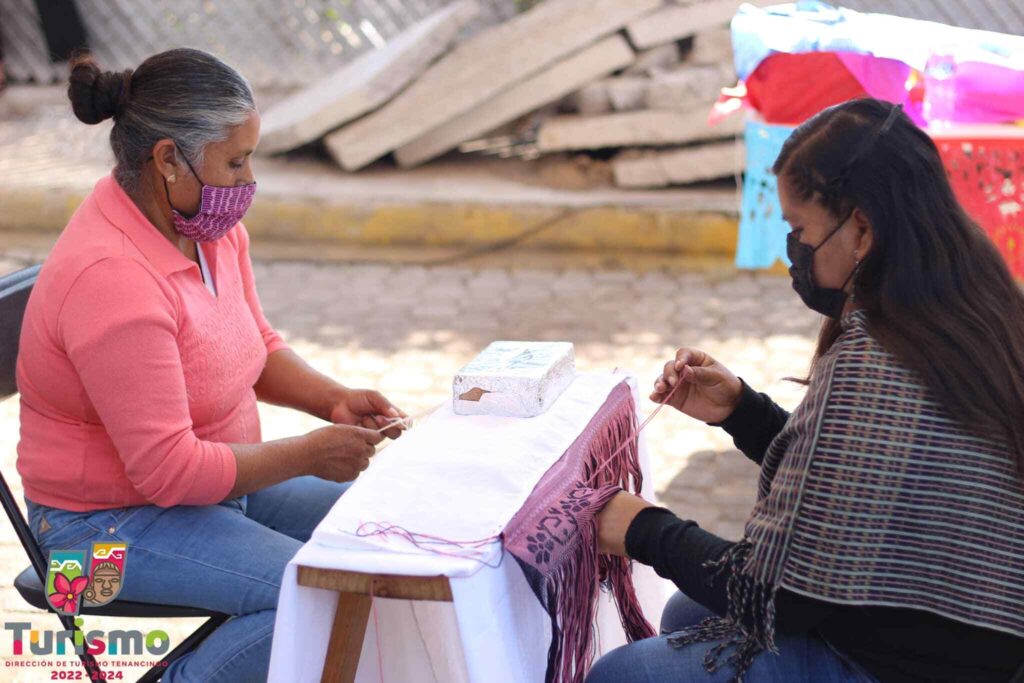
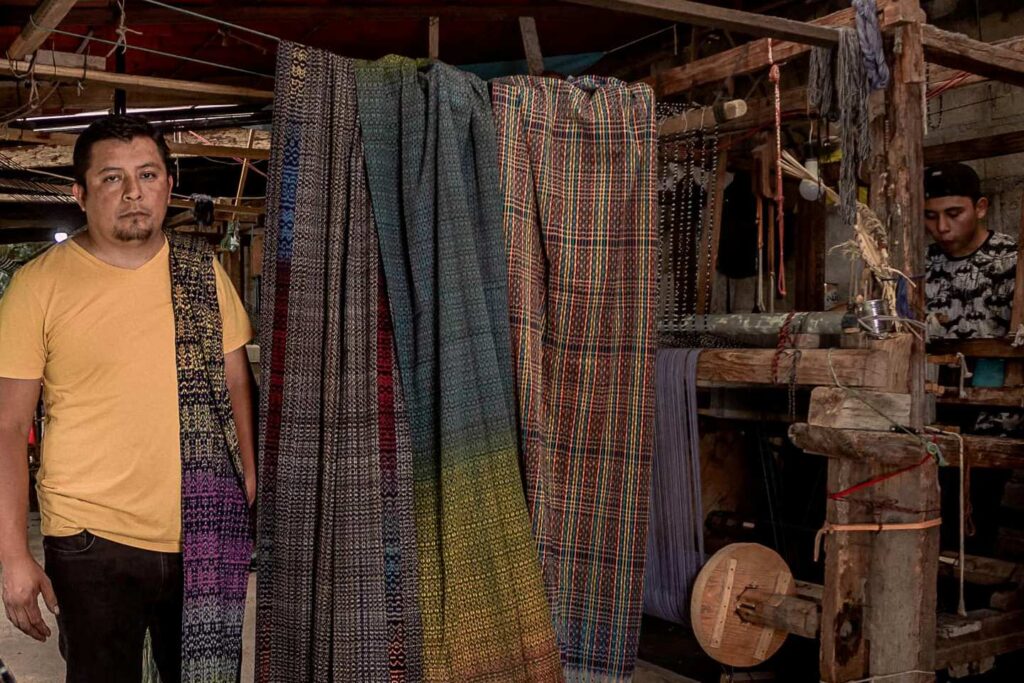
Tenancingo is the weaving center of the Mexican rebozo, made of wool and cotton, with a tradition spanning over a hundred years. This iconic garment commonly bears picturesque names such as ‘arco de granada’ (pomegranate arch), ‘labor doble’ (double labor), ‘llovizna’ (drizzle), ‘palomos’ (doves), and ‘ratoncitos’ (little mice).
To make them, wool must go through fifteen prior processes, including ‘empuntado,’ the final stage where different designs are created on the rebozo, which can take up to four months to complete.
This garment is so popular that over 60 artisans gather at the Tenancingo Center for the Rebozo Fair each September. Various rebozos can be found during the fair, along with artistic and cultural events such as folkloric ballet performances, conferences, and rebozo fashion shows.
Wool art in Mexico is a living expression of the history and culture of its communities, evolving without losing its essence. Each piece, whether a Nierika board, a rug, or a rebozo, invites us to explore the roots of a unique artisanal legacy, admire its creators’ talent, and appreciate the profound meaning they carry.


